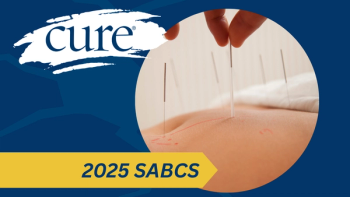
Longer Intervals Between Rectal Cancer Therapies May Improve Responses
Implementing longer intervals between the completion of neoadjuvant therapy and surgery may have a positive effect on pathologic complete responses for patients with locally advanced rectal cancer.
Time intervals longer than 12 weeks between completion of neoadjuvant therapy and surgery were associated with improved tumor regression grades along with systemic recurrence for patients with locally advanced rectal cancer, according to a new study. However, researchers also found that this association may lead to minor morbidity and may increase the complexity of surgery.
Two elements were examined in the study, published in JAMA Surgery: time intervals between neoadjuvant therapy completion (therapeutic agent that is administered before the main treatment, typically surgery) and total mesorectal excision (TME, common surgery used to treat colorectal cancer). The authors of the study searched for potential associations between these two elements and pathologic complete response outcomes (pCR, the disappearance of all signs of cancer within tissue samples) in patients with locally advanced rectal cancer.
Study authors questioned whether pCR could be affected by the given time between neoadjuvant therapy and the surgery for rectal cancer, as traditional surgery generally occurred six to eight weeks after the completion of neoadjuvant therapy.
In the study, there was a total of 1506 patients with locally advanced rectal cancer. Patients were divided into three groups: short-interval (eight weeks or less), intermediate-interval (more than eight weeks and less than or equal to 12 weeks) and long-interval (more than 12 weeks). There were 511 patients in the short-interval group, 797 patients in the intermediate-interval group, and 198 patients in the long-interval group.
The authors noted that waiting eight weeks after the completion of neoadjuvant therapy is common because that is when a tumor responds to the therapy. Thus, the authors determined that this division of intervals with respective weeks was necessary to see if tumors could respond sooner and to determine if there are additional benefits after waiting 12 weeks.
The authors found that pCR was obtained in 255 patients in total. Regarding associations between time intervals and pCR, the short- and long-interval groups did not show any associations when compared with the intermediate-interval group.
The authors also found that time intervals were not associated with intraoperative complications (difficulties during the performance of surgery). However, the long-interval group was associated with a higher risk of minor complications following the surgery and a longer operative time, as the authors determined.
A 41% risk reduction in systemic recurrence from the long-interval group in comparison with the intermediate-interval group was found as well.
“This can be attributed to the fact that in patients with rectal cancer who were treated with (neoadjuvant therapy), the risk of distant metastases decreases progressively with tumor regression,” the authors wrote. “Our study results suggest that delaying surgery may reduce metastasis risk by favoring tumor regression sufficiently.”
Regarding overall survival (OS, the period from diagnosis or treatment where patients are still alive), the authors did not find significant improvements, especially from the long-interval group, which the authors thought was unexpected.
“Although pCR by itself is associated with a better long-term outcome, and delaying surgery is one of the strategies that play a role in increasing pCR rates,” said the authors, “no consistent data exist supporting improved survival as a consequence of an extended interval.”
For more news on cancer updates, research and education, don’t forget to





